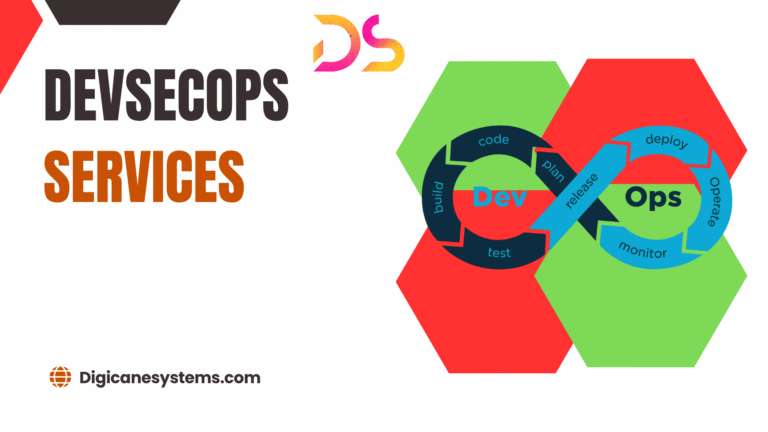Let’s Know DevSecOps – DevOps Vs. DevSecOps: The differences
What exactly is DevOps?
DevOps is a combination of “Development” and “Operations that revolutionizes IT culture by encouraging the collaboration of software engineers along with IT professionals. It focuses on a more efficient process, which allows for faster and better deployment. DevOps brings together different phases in development as well as deployment to create one seamless process, improving team dynamics as well as operational effectiveness.
What’s the Process? How Does DevOps Function?
DevOps is a process that involves a number of phases, including continuous integration and delivery along with continuous oversight. This assures that the development and deployment of software is seamless, automated and synchronized, resulting in more robust and reliable software systems.
Automation plays a vital function in DevOps which allows for rapid as well as consistent and error-free deployment of apps. Tools such as Jenkins, Docker, and Kubernetes are frequently used to automate tasks manage containers, and organize deployment procedures.
Knowing DevOps and DevSecOps
DevOps is an organizational collaborative model that connects teams for software development and operations. DevOps aids IT departments to meet their goals and increase efficiency. Companies adopting the DevOps method typically recruit or train generalists instead of specialists. DevOps engineers typically possess knowledge and experience in both system administration and programming.

DevSecOps refers to the process of integrating security into the lifecycle of software development (SDLC). It was developed as part from the DevOps movement and is built on the same foundation. This approach is essential when working with cloud-based applications that requires the following security guidelines and procedures.
Both models have the same culture and are focused on automation and collaboration It is difficult to distinguish them However, they are different in their approach to objectives for businesses. One way to think of DevOps as opposed to. DevSecOps is that all DevSecOps teams utilize DevOps however, there are some exceptions. DevOps teams employ DevSecOps.
DevOps is focused on communicating across teams to attain higher efficiency and create the feeling of productive collaboration. The objective is to reduce the silos that traditionally lead to a slow SDLC.
DevSecOps concentrates in “shifting Security left” to active development, rather than dealing with it after the code has been completed. The objective is to enhance the security of deployments and ensure compliance by addressing security issues as they occur.
Moving to DevOps to DevSecOps
When you transition, be prepared to ensure that your team is up to speed before changing your method. The preparation process involves ensuring that everyone is on the same page regarding the need and benefits of the change. There are a myriad of options to improve security practices and there are some mistakes to avoid in order to have an effective transition.
What should you expect when preparing for the transition?
A transition typically refers to shifting security left, or shifting the process closer to the user. Making sure that teams are aware of the need for a change and how it affects the development of your applications is an essential initial step. Everyone involved must be aware of the need for a cultural shift as well as a continuous concentration on security.
In order to successfully transition your company will have to educate employees on safe code methods. This will require collaboration from your security team with operators and developers. Education in cybersecurity is a vital first process for the developers.
DevOps Vs. DevSecOps: The differences
Within the DevSecOps model it is evident that there is a culture shift towards security awareness and cooperation across development operations, security, and teams to accomplish the objective of creating robust and secure software applications. Security is integrated into programming development in the most prominent way to ensure that the program is protected across the whole SDLC. For More information – Contact Us
| Aspect | DevOps | DevSecOps |
| Focus | Collaboration between the operations and development teams to improve the speed of software delivery. | Integrating security practices in The DevOps method to assure safe and reliable software delivery. |
| Primarily a goal | More efficient and faster software creation and distribution. | Software delivery that is reliable and secure with a focus on ongoing security. |
| Integration of security | Security basics are incorporated into the processes. | Security practices are integrated from the beginning (i.e., “shifted left”) as well as security being a shared obligation. |
| Automation | Automatization of testing, development and deployment procedures. | Automatization of security testing and security scanning and compliance checks, for example. |
| Team participation | Teams for development and operations are joined together to form a cohesive whole. | Operations, development and security teams working in a teamwork. |
| View of the life cycle | The development and distribution of software. | Security is integrated in every stage within the SDLC. |
| Change in culture | The focus should be on breaking down the divisions between operations and development teams. | The emphasis is on a shift in culture towards security awareness and collaboration among teams. |
| Technology and Tools | Tools for CI/CD, Configuration Management tools for monitoring infrastructure as code (IaC). | Security testing tools and vulnerability scanners. Security data and events management (SIEM) Systems. |


